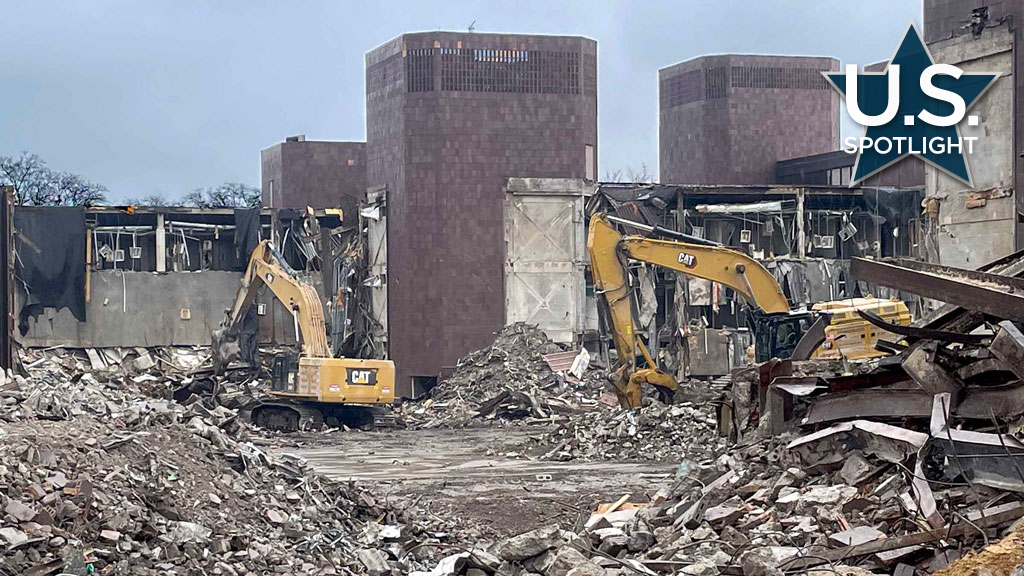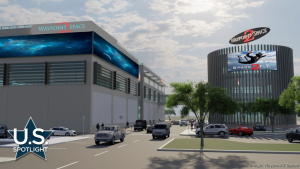A 40-acre modernist campus that used to be headquarters for the Kmart discount chain, now defunct, is facing the wrecking ball.
But this was no ordinary headquarters building, it was an early 1970s example of Metabolist architecture, a Japanese design school that saw buildings as a kind of living organism or metabolism with connecting links, also known as “Muscular Modernism.”
“Because if you look at it, it’s a series of interacting pods,” said John Gallagher, author of the book Reimagining Detroit: Opportunities for Redefining an American City.
The campus, in suburban Troy, was designed by Detroit-based Smith, Hinchman & Grylls, now the SmithGroup, the same firm that employed Minoru Yamasaki, who designed the first World Trade Centre twin towers in New York City, though he wasn’t involved in this complex’s design.
The just over 900,000-square-foot campus, opened in 1972, sported nine “pods” or buildings of varying heights.
While lauding the architecture Gallagher said the complex was notoriously “confusing” to get around.

“They used to have a joke, when a visitor would come and they were done with the meeting they’d say, ‘We’ll let you find your own way out.’”
But in 2006, Kmart merged with Chicago-baseed Sears and the headquarters was moved to the Windy City.
The campus has stayed vacant since that time until November when current owner Forbes/Frankel Troy Ventures LLC began to raze it. Forbes also owns the high-end Somerset Collection shopping mall across the street. An official did not respond to a request for comment.
Forbes has not publicly indicated what the site might be used for but there is speculation it could be ideal for new housing along the heavily trafficked Big Beaver Road, close to the sprawling mall, several business parks and residential housing in affluent Oakland County.
Gallagher, who has long covered the Detroit development industry as a former business reporter for the Detroit Free Press, was critical of what the demolition represents.
“It was considered very futuristic when it opened and the fact they’re tearing it down I just think it demonstrates the whole throwaway culture we have now and what a waste on a colossal scale.”
Gallagher was also at a loss as to what the site might be replaced with though suggested it could be some combination of Somerset’s extended retail and housing, though leery of an outlet mall.
“Troy is pretty finicky what goes there,” noting the city rejected an IKEA store.
“They didn’t want that deep blue warehouse look and so it went to Canton,” another Detroit suburb, he said.
As for the demolition itself, while massive, it’s business as usual for the Detroit-based Adamo Group.
Adamo’s project manager Brian Haller called the contract “relatively straightforward” though he acknowledged the architectural uniqueness, such as the maze of connections and pods, as many as 25 structures.
Adamo’s work actually commenced after site owner Forbes removed all of the environmental hazards such as hazmat and asbestos.
“My job is to wreck that building and haul it all away,” Haller said.
The site’s location presents a bit of a challenge since it’s across from a thriving mall during the holiday season.
“So just a little care in trucking and understanding how many people are around,” he said.
Consequently, the crew left an exterior wall standing to minimize blowing dust and debris off the site.
As of mid-December, Adamo had completed 40 per cent demolition but cleaned and hauled off only about 15 per cent. The project should be completed by June.
The enormity didn’t faze Adamo as it just completed the tear down of metro Detroit’s Eastland shopping mall, which was one-million-plus square feet, last year.
“This fits right into our wheelhouse in terms of size and scale,” Haller said.
Otherwise, it’s a traditional mechanical demolition with excavators equipped with shears, multi-processors, grapples and pulverizers.
The “majority” of sorted debris from concrete and masonry to metals is recycled, Haller said.
One crew works on one section at a time from the two-person frontline wrecking operators to the rest categorizing, cleaning and loading on to trucks; about six to 10 people altogether.
Despite the complex’s “very unique” structure the “only real challenge” is an elevated roadway over a basement.
“We only run across it with empty trucks, we don’t drive loaded vehicles over it, just from a safety standpoint,” Haller said. “So we essentially have to split the site in two for our trucking operation.”
Crews started the first portion of the project on the north working south and all loaded trucks leave on the north half. Then they’ll flip and trucks will load and leave from the south side.











Recent Comments